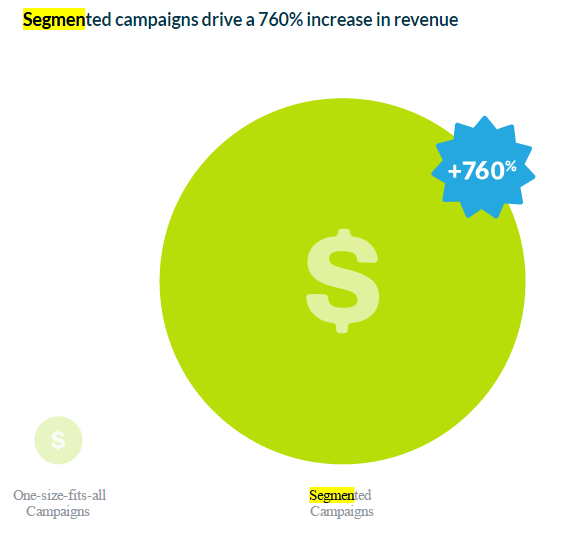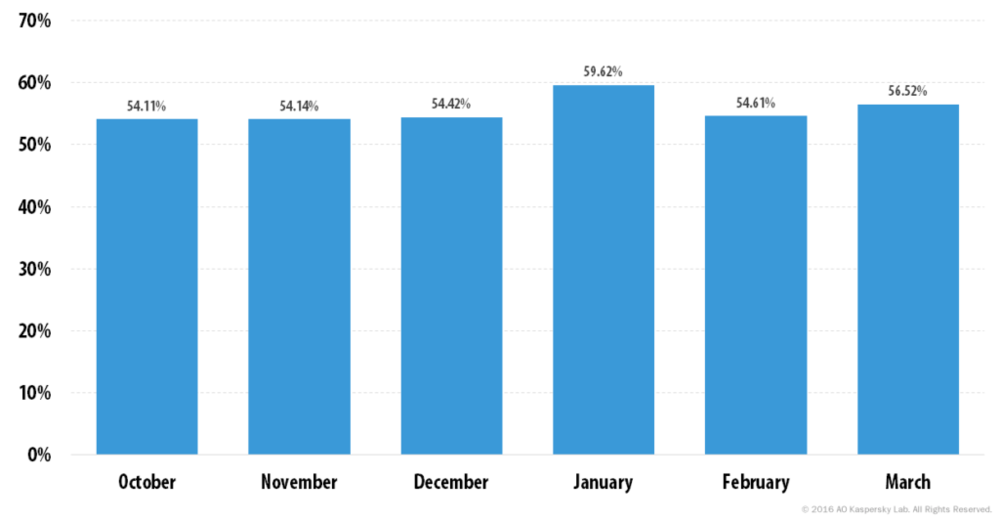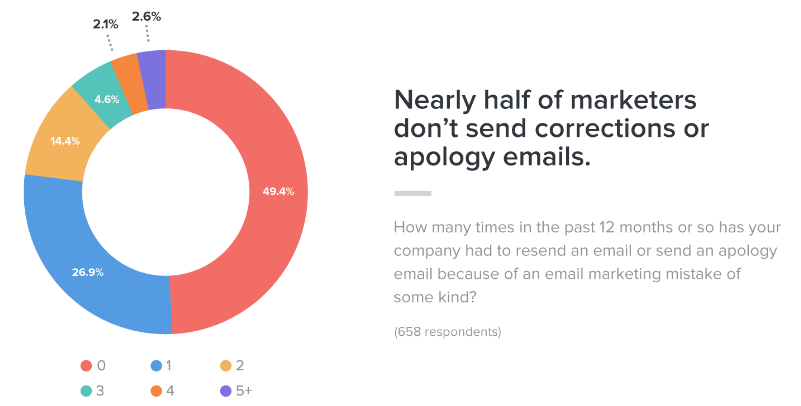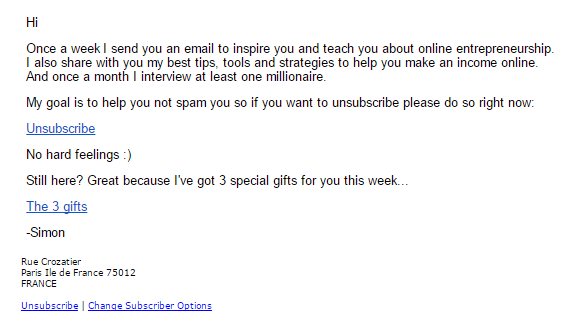
Email is one of the most powerful tools at a multifamily marketer’s disposal. The ability to get your marketing messages or content sent directly into a person’s inbox is amazing. Unfortunately, too many apartment marketers are making some common mistakes that halt their efforts.
Whether your emails aren’t being read or you can’t seem to get people to click through to your website, we’ve got you covered. Here are 14 email marketing mistakes you should avoid at all costs.

First and foremost, if you’re sending emails to tenants straight from Gmail, it’s time to stop immediately. For one, you have a greater chance of ending up in the SPAM folder when you’re sending hundreds of identical emails from your regular email client.
But another reason you need to upgrade to email marketing software is to get access to autoresponders, analytics, list management tools and several other features that will make your email campaigns more effective.
Subject lines are the gateway to your emails, so you need to get them right. The average office worker receives about 121 email per day, and 35% of people open emails based on the subject line alone. Crafting the perfect subject line can be the differentiator between your email and the dozens of others your recipients see every day.
We realize writing compelling subject lines doesn’t come natural to everyone. So here are some tips for more click-worthy email subject lines: 6 Email Subject Line Tips To Boost Open Rates (Backed By Data)
Apartment marketers often build their email list using a few different tactics. Your list could consist of blog newsletter subscribers, current residents and walk-in leads. Each of these segments has unique needs, so you can’t send the same emails to all of them.
Email segmentation means dividing your list based on certain criteria. It could be geographics, demographics or the way people subscribed to your list. The primary benefit of segmenting your list is to provide the most relevant emails to each subscriber. The more personalized and targeted your emails are, the better response you’ll receive from your subscribers.
In fact, data from DMA found that marketers have noted a 760% increase in revenue from segmented campaigns.

What makes up a majority of the junk mail you receive from the post office every day? If you’re like most people, it’s “special offers” and promotional material that you neither want or need. Well, apartment marketers need to think of emails in the same way.
If the only time you send emails to your list is to promote a new unit available or to let them know about discounts, your subscribers are going to start treating your emails just like junk mail. They’re going to put it directly in the trash, often times without even reading it.
Instead, make your emails a mix of helpful content such as your latest blog posts, or put together a newsletter with local events and community updates. That way everyone can get some value out of your emails.
Data from SecureList suggest around 56% of total email received is classified as SPAM.

Email clients like Yahoo and Gmail have built in programs to detect SPAM. If your emails set off certain triggers, there’s a chance your subscribers aren’t even seeing them. So how do you avoid them?
First, try to avoid using these words in your email subject line and body. They’ve been shown to be red flagged as SPAM.
Another red flag that could land you in the SPAM folder is filling your emails with links. That, and using email shorteners like Bitly rather than the full URL. Spammers are known to use link shorteners to hide the URL they’re directing traffic to, so some SPAM filters will block emails containing them.
Here are some more tips on how to avoid ending up in the SPAM folder.
Half of marketers send at least one email per year apologizing for an email marketing mishap.

Often times, these mistakes can easily be avoided by simply testing emails before you send them to your list. This step should be mandatory for every apartment marketer, and can save you from a world of embarrassment.
Don’t just glance over your email while you’re editing it. Send a test email to yourself AND somebody else in your company to thoroughly review it. Look for typos, misinformation, formatting issues and any other possible problems.
Another solution is to send emails in batches. That way if there’s an issue, you have a chance to fix it before you send it to the rest of your list.
Remember, once you hit send there’s no taking it back.
The CAN-SPAM Act requires companies to have a way for email subscribers to unsubscribe from a list. Specifically, it says:
“Your message must include a clear and conspicuous explanation of how the recipient can opt out of getting email from you in the future.”
Unfortunately, some marketers think that by making it difficult for people to unsubscribe, they’ll lose fewer subscribers. However, this does much more harm than good. If people are unable to quickly unsubscribe from your emails, they’ll likely report you as SPAM so you’ll stop showing up in their inbox.
When your messages are continuously getting marked as SPAM or reported to email clients, a few things can happen:
The easiest way to avoid these mistakes is to have a one-click unsubscribe button at the bottom of all your emails. This feature is built-in for most email marketing software.
Over the past decade, we’ve seen a huge shift away from desktops for everything from using social media to browsing the internet and of course, checking email. In fact, 67% of emails are opened on mobile devices, with 52% of that being from a smartphone.

For apartment marketers, that means you need to build your email marketing campaigns with the assumption that people are reading it from a mobile device.
This is particularly important for apartment marketers who use newsletter designs that were made for desktop viewing. You may have to get another design made so that your emails can display on mobile devices without having to pinch-to-zoom or open up in a separate browser. The good news is most email marketing tools have responsive templates designed to look great on any device.
At AM Digital, we’re huge fans of A/B testing and optimizing conversions. Whether it’s web design, landing pages, social media messages or in this case, emails, split testing is extremely useful.
Split testing emails is fairly simple. You send two versions of your email to a part of your list. One version “A” will be the control, and the other “B” will be the variant. Some common things to split test with emails are the subject line, CTA, personalization or copy.
Wishpond did a case study to show the power of A/B testing your email campaigns. In one example, they tested what would happen if they included the word "You" in a subject line. The version with "you" in it had a 37% open rate, compared to 26% for the variant.

Start split testing your emails to look for ways to improve your open and click through rates.
Remember in the beginning when we said you need to use email marketing software? This is one of the main reasons. Having data on which emails work and which don’t is very important.
Some of the important metrics you can track are:
Get into the habit of checking the performance of all your email marketing campaigns, so you know what to improve on.
Having an email list with 5,000 subscribers doesn’t mean as much when 4,000 of them haven’t opened your emails in months. That’s why it’s important to scrub your list from time to time.
Scrubbing an email list essentially means removing inactive subscribers. We know, you want to build as big a list as possible. However, it’s more important to have an active list than a big one. It ruins your open rates and can throw off your data.
Let’s say you’re sending an email to 1,000 people, but only 100 people open it. That puts your open rate at 10%. However, if 500 people on your list are inactive and haven’t read your emails in months, your open rate is actually closer to 20%.
Some email marketing tools have an auto-scrub feature. But if your open rates seem unusually low over a long period of time, you can also send an email asking people to confirm they still want to receive emails from you. Stress that you’re doing it to help them. Here’s an example of an email that came with the subject line “Please unsubscribe.”

Autoresponders are sequenced emails automatically sent to your email list. The most common form of this is a welcome series of emails for new subscribers. But apartment marketers also use autoresponders for new leads.
For instance, you might set up a series of emails to send walk-in leads that help remind them to follow up with you. You can set your series to stop once the person has taken an action like clicking-through or not opening one of the emails in the series.
Automating your workflow saves time and allows you to focus on optimizing your campaigns, rather than manually sending everything out.
There are no set-in-stone rules for how often you should email your list. It’ll differ business to business. In order to find your sweet spot, you’ll have to test.
If you’re emailing your list too often, you risk turning them off. In fact, sending too many emails is the number one reason subscribers flag emails as SPAM according to a survey from Technology Advice.

On the flip side, if you email your list sporadically, they may forget who you are and unsubscribe the next time you send them an email. You need to develop a consistent flow without being annoying. Start out with once or twice a week, then adjust based on your unsubscribe rates.
Last but not least, the best email list is the one you build organically. As tempting as it may be to buy an existing email list of hundreds or thousands of “leads”, the results won’t be as great as you hope.
Often times these lists are sold to multiple companies. So the people receiving your emails are being bombarded by dozens if not hundreds of other companies with marketing emails.
Also, the people on the list have not opted-in to receive emails from you. So you could potentially run into issues with the CAN-SPAM Act, as well as a ton of people reporting your emails as unsolicited.
Follow best practices and build your email list by putting out great content, collecting leads and other organic tactics. You’ll have a much more valuable list of active subscribers.
If you need help with your multifamily marketing efforts, don’t hesitate to contact us for a consultation. Whether it’s content marketing, social media or SEO we’re just a click away.
These Stories on Strategy

San Diego, CA
600 B St.
San Diego, CA 92101

Austin, TX
600 Congress Ave.
Austin TX 78701

Washington, DC
1875 Connecticut Ave NW
Washington, DC 20009
Copyright © 2024 AM Digital, LLC Terms of Service Privacy Policy
Street Address
City, ST 00000
Call us: 1-800-COMPANY
(800-000-0000)